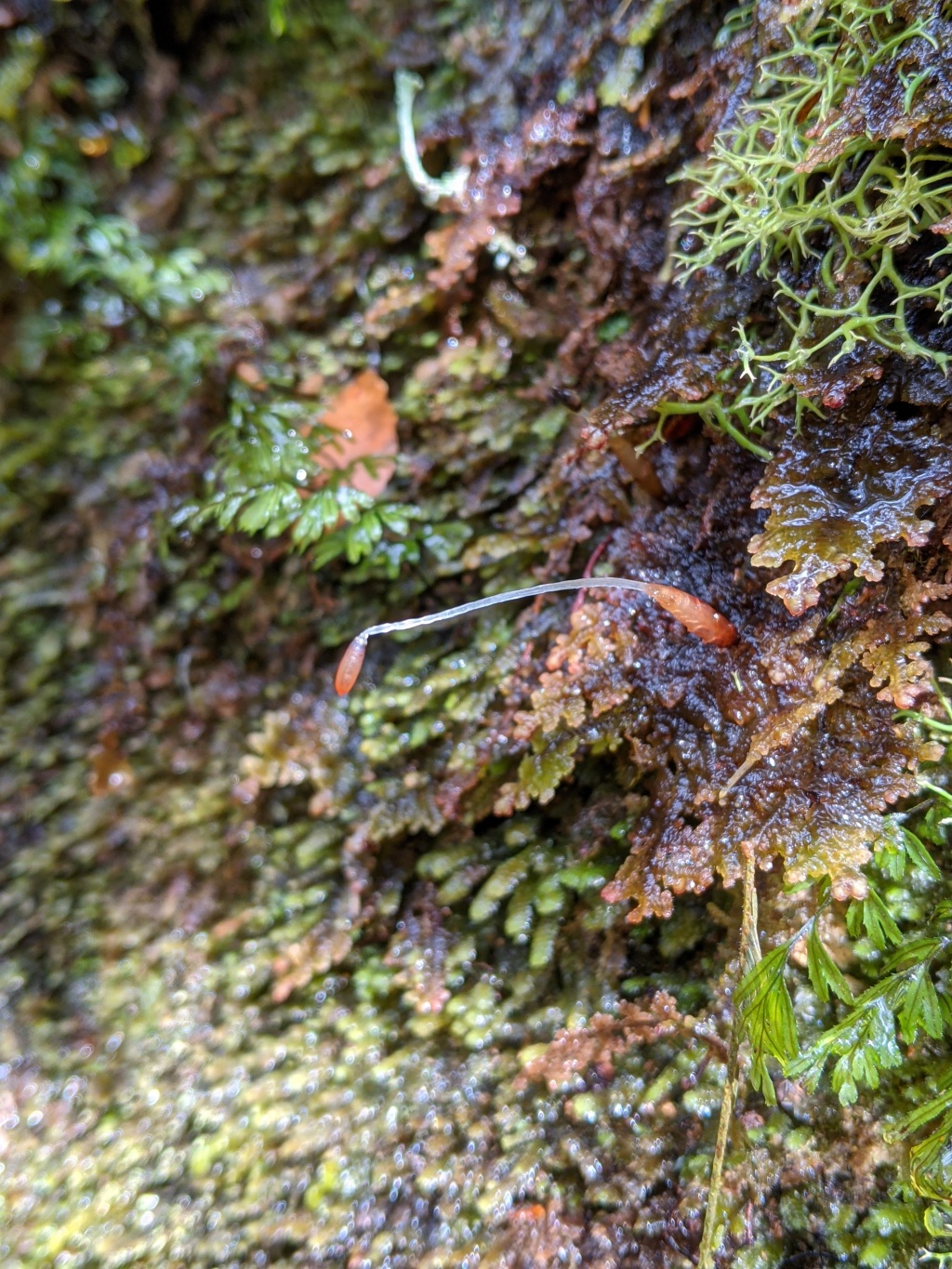Lepidolaenaceae
Epiphytic, rarely terrestrial, dioicous or monoicous (not in Victoria). Specialised asexual propagules absent. Plants with a pinnate to 4-pinnate stem with two ranks of lateral leaves and a single rank of underleaves, often older parts brown to ferrugineous, rarely also with lanceolate paraphyllia with ciliate margins on main stems (not in Victoria). Branches emerging from main stem on the ventral side of a lateral leaf lacking lobule and stylus, without a ring of tissue or ring of small leaf like appendages at base. Lateral leaves incubous, 3-lobed, with a smaller abaxial lobule and stylus; main lobe much larger and ciliate to entire, reniform to ovate, when moist horizontally spreading; lobule saccate, with or without (not in Victoria) a cilium; stylus triangular, entire or ciliate, reduced or absent in branch lateral leaves. Underleaves much smaller than lateral leaves, undivided (not in Victoria), 2-lobed or 4-lobed (not in Victoria) on main stems, with 2 or 4 lobes saccate (not in Victoria) or no lobes saccate, undivided (not in Victoria) or 2–3-lobed on branches, with all lobes saccate or not saccate (not in Victoria); underleaf lobes entire, or dentate to ciliate, ciliate or not (not in Victoria) when saccate; leaf cells quadrate, circular, elliptic or oblong, with numerous oil bodies, sometimes with intermediate thickenings (not in Victoria), often with large trigones, smooth, rarely papillose (not in Victoria). Rhizoids in fascicles from the underleaf base, without peg-like internal thickenings, hyaline or brown. Androecia on short branches, of 4–10 bracts, each with one or two (not in Victoria) antheridia. Sporophyte near apex of leading stem, subtended by a coelocaule; perianth absent or rudimentary. Seta elongate, elevating capsule well beyond plant. Capsule ellipsoid or ovoid (not in Victoria) to cylindric, rostrate, 2–6-stratose, dehiscing by 4 apically connate valves; elaters present, 1–4-spiral. Spores reticulate to areolate or papillose (not in Victoria) on distal face, finely granulate on proximal face, shed singly.
Three genera and 17 species shared between south east Australia, New Zealand and its subantarctic islands, Juan Fernandez, Falkland Islands, Argentina and Chile (Grolle 1967; Crandall-Stotler et al. 2009; Engel 2013); one genus and species, Gackstroemia weindorferi (Herzog) Grolle, in Victoria.
Crandall-Stotler, B., Stotler, R.E. & Long, D.G. (2009). Phylogeny and classification of the Marchantiophyta. Edinburgh Journal of Botany 66: 155–198.
Engel (2013). Austral Hepaticae 50. Gackstroemia in New Zealand, together with an interesting new species. Phytotaxa 118: 9–21.
Grolle, R. (1967). Monographie der Lepidolaenaceae. Journal of the Hattori Botanical Laboratory 30: 1–53.
Schuster, R.M. (1970). Studies on antipodal hepaticae, III. Jubulopsis Schuster, Neohattoria Kamimura and Amphijubula Schuster. Journal of the Hattori Botanical Laboratory 33: 266–304.
Schuster, R.M. (1996). On Jubulopsis Schust. (Jungermanniales: Jubulopsidaceae fam. nov.) and its relationship. Journal of Bryology 19: 297–310.
 Spinning
Spinning